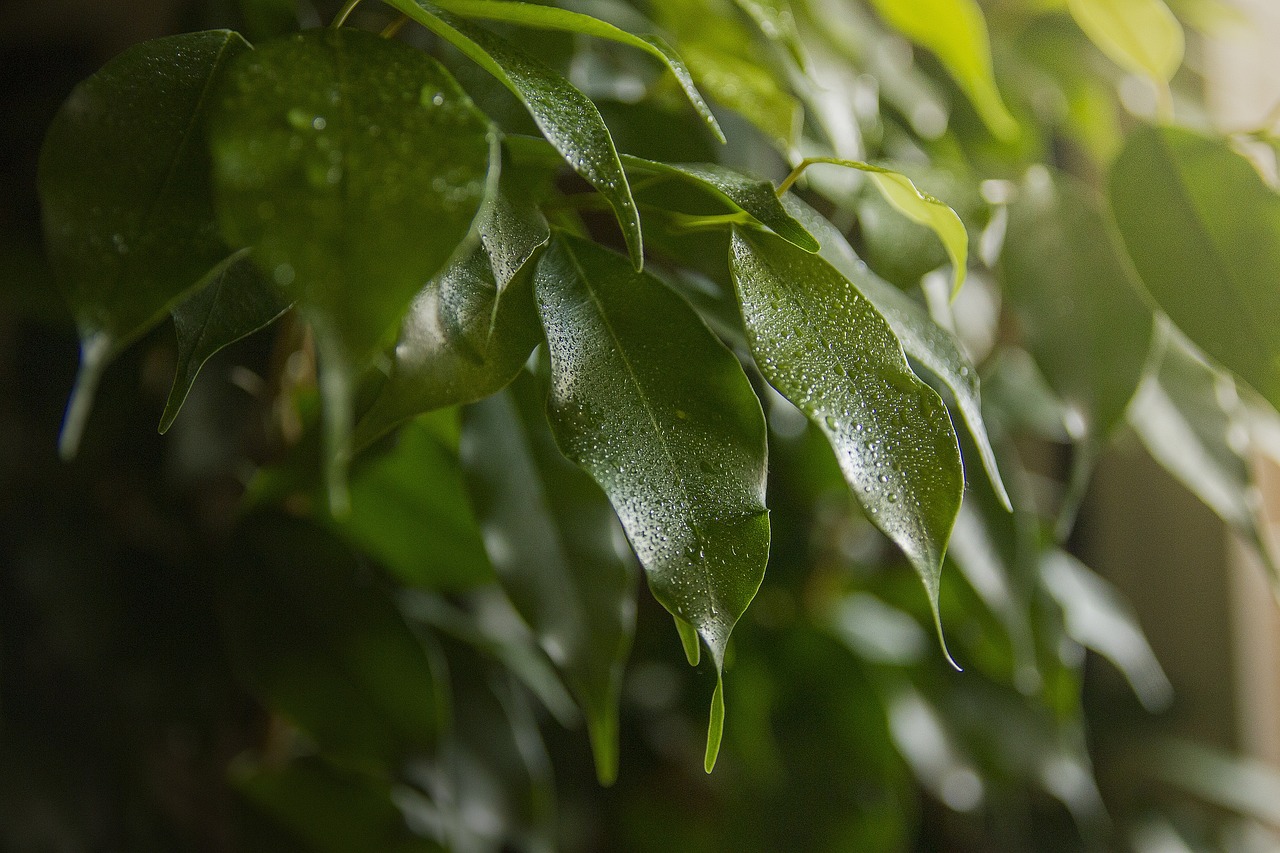Bacterial leaf spot, also known as bacterial blight, is a plant disease caused by various species of bacteria that infect the leaves of plants. It is a common issue that affects a wide range of plants, including ornamental plants, vegetables, and fruit crops. Bacterial leaf spot can lead to unsightly leaf lesions, reduced plant health, and even crop yield losses in severe cases. See the healthy leaves of a Ficus below.

Key characteristics of bacterial leaf spot on Ficus include:
Symptoms of Ficus Leaf Spot
Bacterial leaf spot typically manifests as small, water-soaked spots on the leaves. As the disease progresses, these spots may enlarge and develop a characteristic "halo" or water-soaked ring around them. The spots may turn brown or black, and the affected areas may eventually become necrotic and die. In severe cases, leaf tissue can become perforated, leading to a "shot-hole" appearance.
Lesion Shape and Distribution
The lesions caused by bacterial leaf spot can vary in shape, from circular to irregular. They are often more angular than those caused by fungal diseases. The lesions can be scattered across the leaves or appear in clusters.
Leaf Drop on Ficus
Severe bacterial leaf spot infections can cause premature leaf drop, weakening the plant and potentially affecting its overall growth and production. This is why the leaves are turning yellow and probably falling off.
Spread of Leaf Spot
Bacterial leaf spot is primarily spread through water, mainly splashing water during rain or irrigation. The bacteria can enter plants through natural openings (such as stomata), wounds, or cuts on the leaves.
Management of Bacterial Leaf Spot
Managing bacterial leaf spot involves a combination of cultural, preventive, and sometimes chemical measures:
Cultural Practices: Practice good sanitation by removing and destroying infected plant material. Meaning pruning off all damaged or infected leaves with clean sharp secateurs. Avoid overhead watering, as this can spread the bacteria along with excess humidity when growing Ficus indoors. Space plants appropriately to provide good air circulation and avoid working with wet plants.
Resistant Varieties: Choose plant varieties that are resistant to bacterial leaf spot when available. Resistant varieties are less likely to develop severe infections.
Chemical Control: In some cases, especially when the disease is severe, applying copper-based fungicides or bactericides may help reduce bacterial populations. However, preventive measures are often more effective than treating an existing infection.
Healthy Soil: Maintain healthy soil conditions through proper fertilization and organic matter incorporation, as healthy plants are better equipped to withstand diseases.
It's important to note that bacterial leaf spot can be difficult to manage once established. Therefore, a proactive approach, including proper plant hygiene and cultural practices, is crucial to prevent its occurrence.
Hope that helps!
Lee
 Lee Burkhill: Award Winning Designer & BBC 1's Garden Rescue Presenters Official Blog
Lee Burkhill: Award Winning Designer & BBC 1's Garden Rescue Presenters Official Blog



